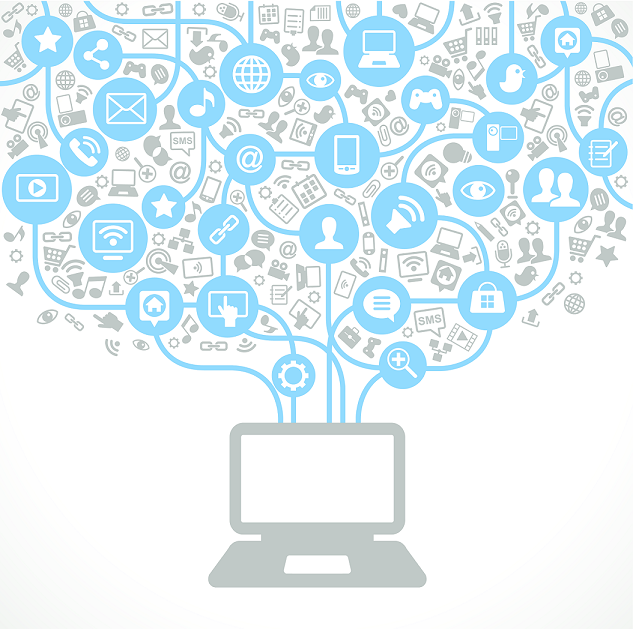Live Online Shopping Data: The Gift That Keeps Giving This Season
Published in ClickZ on November 26, 2014.
This holiday season, real-time analytics could help marketers keep up with the successes (or failures) of their campaigns, and make the necessary adjustments.
I don’t know about you, but this year flew by for me and I cannot believe that the holidays are officially upon us. That said, it is one of my absolute favorite times of the year, with the opportunity to spend time with family, enjoy the season - AND watch how brands and retailers pull out all the stops to engage with their customers with all of the latest tech trends and innovations! From TV commercials to digital initiatives and in-store experiences, I love to see how brands differentiate from one another and the way with which the strategies differ depending on their target audience.
Reading advertising and marketing publications like this one is a favorite pastime as pundits comment on the strategy and success of what is working out in the market. It’s the season where brands test like crazy, because the stakes are so high, and that gives us a window into what will be on trend for marketing in 2015 and beyond. Even better is getting right into the numbers, and now we can do it ourselves much more easily. Though I am not currently managing B2C profits and loss for the season, being a data geek, I love keeping a pulse on the success of the season as it happens. So I thought I’d share some of the exciting insights from the U.S. online shopping transactions observed this past weekend (the weekend before the Christmas shopping season "officially" begins with Black Friday) – you’ll be interested to see the data behind the early start consumers, retailers, and marketers got on the season.
IBM's real-time analytics reported these online shopping trends during the weekend before Thanksgiving:
- Online sales were up 18.7 percent over the same two-day period in 2013
- Mobile traffic accounted for 48.8 percent of all online traffic, an increase of 24.4 percent year-over-year (YoY)
- Mobile sales accounted for 26.6 percent of all online sales, an increase of 23.9 percent YoY
This early data clearly shows the continued growth of online shopping (in general) and a drastic increase in mobile traffic and sales, as many predicted. But let’s take a quick look at some highlights to understand the drivers behind these trends (full analysis available here).
- Consumers Cash-In on Online Bargains: Average order value was $112.86, a decrease of 5.4 percent over the same period in 2013.Shoppers also purchased an average of 3.2 items per order. This trend may indicate that shoppers are becoming more comfortable and digitally savvy in how they use online coupons and rebates to secure the best bargains.
- Smartphones Browse, Tablets Buy: Smartphones drove 31.8 percent of total online traffic, nearly double that of tablets, which accounted for 16.5 percent of all online traffic. However, tablets are winning the shopping war. Tablet sales accounted for 17.3 percent of online sales, nearly twice as much as smartphones, which accounted for 9.2 percent of total online sales.
- The Desktop Is Not Dead: Even as mobile shopping continues to grow, many consumers chose a more traditional online experience. Desktop PC traffic represented 51.2 percent of all online traffic, and 73.4 percent of all online sales. Further, consumers spent more money on their desktops $123.29 than their mobile devices at $105.37, a difference of 17 percent.
- Facebook vs. Pinterest: As marketers continue to rely on social channels to drive brand loyalty and sales, IBM analyzed trends across two leading sites, Facebook and Pinterest. Facebook referrals drove an average of $101.83 per order while Pinterest referrals averaged $103.87 per order. However, Facebook referrals converted sales at twice the rate of Pinterest.
This real-time data will allow marketers to fully analyze the success of their holiday campaigns as it occurs. Enjoy the data and the insight – it’s our gift to you. I hope it will be helpful to you as you drive your season to success, and hope that it will allow you to plan and optimize your time during this busy time of year so that you can enjoy extra time with your friends and family.
Happy Thanksgiving and best wishes for a fruitful holiday selling season!
For free access online shopping data live as it happens throughout the season, check out the IBM ExperienceOne Benchmark Live self-service data application and/or stay tuned to the IBM Digital Analytics Benchmark Hub for detailed analysis of the metrics for the biggest shopping days of the season.
